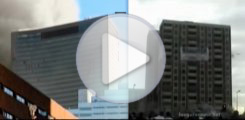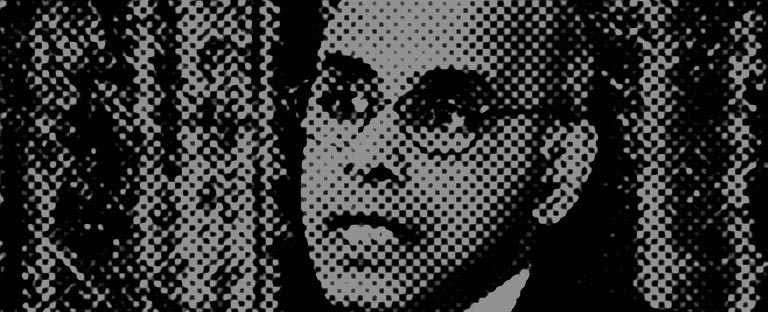Editor's Note: This fascinating and provocative technical piece on NIST’s manipulation of the WTC 7 evidence is broken down into a series of six articles. The first installment (below) is the INTRODUCTION to the whole series. Stand by for the next five installments in subsequent articles, to be published monthly.
INTRODUCTION
by Simon Falkner and Chris Sarns
The United States government's official investigator of the destruction of the three skyscrapers on September 11, 2001, is the National Institute of Standards and Technology (NIST), an arm of the Department of Commerce. The agency became highly politicized during a Clinton-era restructuring. "In essence," recalls a NIST whistleblower, "we lost our scientific independence, and became little more than 'hired guns.'"
NIST has made many false written and oral statements about the collapses of the three World Trade Center buildings on 9/11 — statements that have now caused 2,300 architects and engineers to question the government investigator's credibility and veracity. One of its most implausible claims is that a high-rise steel structure in New York City was destroyed by fire alone.
 Figure 1. NIST's final report states that random office fires alone brought down Building 7. However, the collapse of WTC 7 compared, side by side, with an acknowledged professional controlled demolition reveals an entirely different story. Only a handful of companies have the ability to neatly implode a steel-framed skyscraper into its own footprint like this. Click on this video to see WTC 7 fall next to three acknowledged professional CDs.
Figure 1. NIST's final report states that random office fires alone brought down Building 7. However, the collapse of WTC 7 compared, side by side, with an acknowledged professional controlled demolition reveals an entirely different story. Only a handful of companies have the ability to neatly implode a steel-framed skyscraper into its own footprint like this. Click on this video to see WTC 7 fall next to three acknowledged professional CDs.
Indeed, the fall of World Trade Center Building 7 is the third of the three only known "global collapses" of high-rise, steel-framed buildings ever recorded, and all three incredibly took place in one day: September 11, 2001.
NIST contends that the Twin Towers were brought down by the impact damage and consequent fires from the large airliner jets that hit them. But no jet struck WTC 7, and NIST claims that office fires alone demolished that building. The agency does admit that, if true, this would be the first and only time that an office fire brought down a steel skyscraper.
Ultimately, we are asked to accept on faith NIST's ever-changing, remarkable, and, frankly, suspect explanations for WTC 7's destruction.
Why "suspect"? Because NIST ignored the National Fire Protection Association protocol — specifically, the NFPA 921 Guide for Fire and Explosion Investigations — and refused to perform a forensic investigation. As a consequence, NIST has no physical proof to back up its unusual explanation for WTC 7's destruction.
Even more concerning, NIST bases its finding on computer models whose input data it refuses to release to either the scientific community or the general public. Thus, it is impossible to independently verify NIST's work and its startling conclusion. AE911Truth contends that NIST's methodology is contrary to every tenet of legitimate scientific inquiry. In this article, we seek to show how the supporting "evidence" put forward by NIST in the 13 years since that fateful day has been consistently and deliberately misleading.
We will review NIST's progression from its 2004 preliminary report to its 2008 final report — a progression that will reveal a pattern of omissions and distortions that appear designed to arrive at a preconceived conclusion.
We will show, step by step, that NIST's final hypothesis of scattered office fires producing the gravitational collapse of a 47-story steel structure is a classic case of "cover-up" — designed to obscure the fact that the implosion of Building 7 was the result of controlled demolition.
NIST's pattern of omissions and distortions:
-
In its 2004 preliminary report, NIST fabricated the myth that debris from World Trade Center Building 1 (the North Tower) created a 10-story hole at a specific location at the base of WTC 7's south face. The following year it propagated that myth in Popular Mechanics, which defended NIST's work.
-
It turns out that NIST "needed" the 10-story hole to exist at this specific location to back up its explanation for the collapse of Building 7. This is an example of reverse engineering, where supposed evidence is constructed to fit a prearranged conclusion. NIST also used its Popular Mechanics (PM) platform to launch a second myth — namely, that Building 7 had a peculiar design, which purportedly made it vulnerable to collapse.
-
The PM article also helped NIST generate two more myths — namely, that diesel fuel tanks stored inside WTC 7 supposedly fueled an imaginary fire on the fifth floor, ostensibly helping to weaken the building at a strategic location, and that certain trusses helped to facilitate the collapse of the entire building by transferring stresses from supposedly damaged columns on the south side of the building.
-
NIST's final 2008 report discarded these self-constructed myths and introduced a new collapse initiation hypothesis that blames WTC 7's destruction on normal office fires. The final report is premised on the same shoddy investigative practices that the agency displayed in its 2004 report and in the 2005 PM article. Indeed, NIST's omissions and distortions are gross enough to discredit both its entire WTC 7 investigation and the agency itself as a viable 9/11 investigator.
-
NIST has consistently ignored evidence that would refute its preconceived conclusion. All the hard evidence demonstrates that Building 7 was brought down by classic controlled demolition.
We trust that a thorough perusal of this article will convince most readers that NIST's methodology and conclusions are not scientific and thus not credible. We also trust it will cause readers to declare "Enough is enough!" and demand a proper investigation.
In the next (second) installment of this series of six articles, PART 2: NIST and Popular Mechanics Fabricate Myth About WTC 7’s "Scooped-Out" 10 Stories, the authors explore the unsubstantiated claim of massive damage from WTC 1 debris to the south face of WTC 7.






